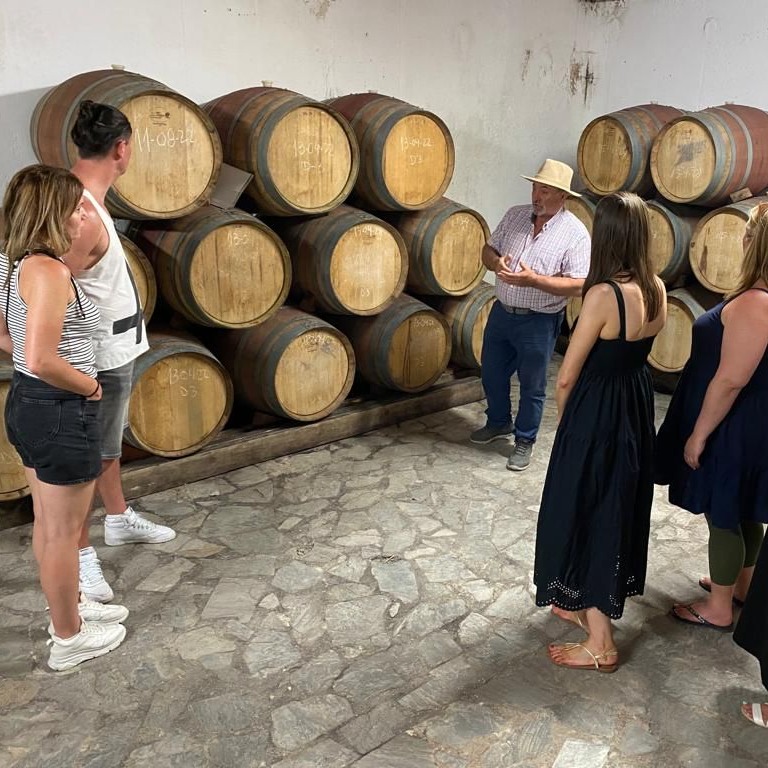Exploring Argentine food regions shows a colorful world of Argentine cuisine diversity. Each area has its own traditional Argentine dishes. The deep Argentine food culture blends European touches, like Italian, with the traditions of indigenous peoples like the Quechua, Mapuche, and Guarani. This mix creates a journey of authentic Argentine flavors.
Argentina’s best food is famous worldwide, with its tender steaks and rich pastas leading the charge. But regional specialties offer a unique taste in every province. This variety in Argentine regional foods will captivate all who try it. Dive into South American cuisine and the wider world of Latin American gastronomy. Enjoy the many flavors and traditions across this alluring nation.
The Cultural Mosaic of Argentine Cuisine
The Argentine culinary traditions spread across the country, blending textures and flavors. These combine European culinary influences and Indigenous gastronomies like the Quechua, Mapuche, and Guarani. This mix creates unique Argentine regional recipes.
In Patagonia, Welsh traditions mix with the local landscape. The area is known for its grass-fed lamb and fresh trout. These dishes tell stories of their origins and highlight the area’s varied geography.
- Quechua Traditions: Embrace the intense flavors of ancient cooking methods still prominent in Northwestern Argentina.
- Mapuche Influence: Taste the wood-fired delights that encapsulate the soul of Mapuche cooking tradition.
- Guarani Contributions: Discover the sweet and savory blends of Guarani heritage that complement the Argentine flavor palette.
There’s a beautiful mix of traditional and European styles in Argentine food. For example, Bariloche is known for its chocolate bars and fondue. This shows how well local and Swiss-German tastes blend together.
The table below shows some of the regional dishes in Argentine cuisine.
| Region | Specialty | Cultural Influence |
|---|---|---|
| Patagonia | Lamb & Trout | Welsh, Indigenous |
| Bariloche | Chocolate & Fondue | European Alpine |
| Northwestern Argentina | Locro Stew & Empanadas | Quechua |
| The Pampas | Asado | Spanish, Italian |
Welsh tea rooms add to the region’s culinary story. They offer a unique dining experience, similar to Wales’ lush valleys. Argentine cuisine does more than feed the body. It tells the journey of its people, connecting their stories with every bite.
A Gastronomic Journey Through The Pampas: Beef and Beyond
Embark on an epicurean voyage to the heart of the Argentine Pampas. This place is where traditional Argentine food meets vast beef consumption. On these fertile plains, the art of Argentine red meat shines, as prime-cut beef gains global recognition. The story goes beyond beef, weaving through the rich tapestry of Argentine culinary diversity.
The revered Argentine steakhouses are temples of grilled meats. They tell tales of ancient cooking methods. The asado’s distinct flavors, skillfully charcoal-grilled, transform the Pampas into more than just land. It becomes the essence of the nation’s gastronomy.
But there’s more than cattle. The land stretches to Patagonia, home to rich, flavorful lamb. This area’s dishes show deep respect for both land and sea. Each bite, from farm or ocean, carries the spirit of its origin.
Empanadas, known for their diverse fillings, bring the tastes of Argentina together. Filled with meat, corn, or sweets, they capture the country’s welcoming soul. A delicious joy awaits in every pastry fold.
| Food Item | Region | Description |
|---|---|---|
| Prime-Cut Beef Asado | Pampas | A showcase of Argentina’s finest beef, grilled to smoky perfection using time-honored techniques. |
| Grass-Fed Lamb | Patagonia | A regional specialty where the natural landscape imparts a distinctive, succulent taste to the lamb. |
| Empanadas | Nationwide | Savory pastries with regional fillings that offer a delicious glimpse into local traditions and tastes. |
The journey through Argentina’s food scene is full of variety and vitality. It stretches from the vast Pampas to Patagonia’s shores. Here, a shared meal tells tales. Tales of the land, its people, and their passion for the rich palette that is Argentine regional dishes.
Food 7 Regional Variations in Argentine
In the heart of South American gastronomy, regional Argentine recipes play a big role. Argentina’s vast landscapes support a wide variety of Argentine cuisine diversity. Each area brings its own regional Argentine dishes to the nation’s culinary identity.
Argentine food regions keep a cultural dialogue alive through their distinct flavors. The famous asado shows this, changing from the north to the south. Each tells a unique story with grill smoke and meat quality. Likewise, pasta, loved for the country’s Italian roots, shows creativity in regional Argentine recipes.
Tasting empanadas in various regional forms is a journey for adventurous eaters. From spicy northwest variants to milder coastal flavors, empanadas show
Here are some of the regional highlights:
- Salta: Famous for hearty empanadas, offering traditional flavors.
- Andean Northwest: Known for Locro stew, a savory and warming dish.
- Tucumán: Where empanadas pair with local wines, leaving a lasting impression.
- Buenos Aires: Home to thin pizzas with a generous cheese topping for an Argentine twist.
The variety of regional Argentine dishes goes beyond what people usually expect. Each meal carries the identity of its region. This diversity of flavors places Argentine cuisine on the South American gastronomy map. It invites food lovers worldwide to explore its rich and flavorful journey.
Pasta Perfection: Italian Influence on Argentine Foods
The arrival of Italian immigrants in Argentina brought a plethora of culinary wonders, showing in the Italian influence on Argentine foods. Among their gifts, the love for Argentine pasta stands out, blending Italian tradition with local flavors. Every corner of Argentina’s lively cities features fresh pasta shops. They invite you with the scent of home-cooked meals and a taste of cultural heritage.
One can’t talk about iconic Argentine dishes without mentioning the Argentine milanesa. This breaded meat dish is a staple at family tables and local eateries. Though hailing from Italy, the milanesa is now fully part of Argentina’s cuisine. It shows how well culinary traditions can merge.
Pasta in Argentina takes many forms. There’s the simple yet hearty Argentine ravioli, filled with meats or vegetables. Then, the creative sorrentinos come in, round pastas stuffed with ingredients like ham, cheese, spinach, or ricotta.
Argentine pizza also claims its spot in the culinary scene. Restaurants compete to offer the best of two styles. You have ‘pizza de molde,’ known for its thick base, and ‘pizza a la piedra,’ with a crispy, thin crust.
- Pizza de molde — A chunky, bready base with lots of toppings. It’s like eating at a family gathering.
- Pizza a la piedra — Thin and crisp, celebrating Italian roots with quality ingredients for pure flavor.
Together, these dishes do more than just swap recipes between countries. They show innovation and integration when cultures mix. Below is a table with the top Italian-inspired Argentine dishes and what makes them special:
| Dish | Description | Origin |
|---|---|---|
| Argentine Milanesa | Breaded beef or chicken cutlet, often served with a lemon wedge or topped with tomato sauce and melted cheese. | Adapted from Italian Cotoletta alla Milanese. |
| Argentine Ravioli | Stuffed pasta squares, which may contain a mix of meats, cheese, and vegetables. | Italian Ravioli with local fillings. |
| Sorrentinos | Round stuffed pasta, larger than ravioli, often filled with ham, mozzarella, and ricotta. | Named after the town of Sorrento, Italy, but developed in Argentina. |
| Pizza de Molde | Thick crust pizza with a soft, airy dough and abundant cheese and toppings. | Adaptation of Italian-American style pizzas. |
| Pizza a la Piedra | Thin crust pizza, crisped on a hot stone for a light, crunchy base. | Influenced by traditional Italian pizza, but refined in Argentina. |
Iconic Argentine Dishes: Empanadas and Dulce de Leche
Argentine comfort food brings us close to the heart of the country. Argentine empanadas are loved far and wide. These pastries are filled with beef, chicken, or sweet corn, among others. Each area in Argentina adds its own special touch. Dulce de leche is another key part of Argentine cuisine. This sweet, creamy delight is used in many Argentine desserts, showing the country’s love for sweets.
But there’s more than just dulce de leche in Argentina’s sweet tradition. In the morning, people often enjoy medialunas, which are like croissants. They are perfect with coffee or yerba mate tea. Then, there are alfajores, cookies filled with dulce de leche and covered in chocolate, which have won the hearts of many around the world.
To truly understand Argentine treats, one must know about caramelizing condensed milk. This process creates the best dulce de leche. These sweets are not just dessert. They are a deep part of the culture, bringing joy and comfort to any table.
Let’s explore the amazing world of Argentine cuisine, both savory and sweet.
| Category | Dish | Description |
|---|---|---|
| Savory Comfort | Argentine Empanadas | Stuffed pastries baked or fried, filled with meats, vegetables, or cheese. |
| Sweet Comfort | Dulce de Leche | A velvety confection used to sweeten pastries, desserts, and even as a spread. |
| Morning Delight | Medialunas | Half-moon shaped pastries, similar to croissants, often glazed with a sweet syrup. |
| Cultural Staple | Alfajores | Traditional cookies filled with dulce de leche and coated in meringue or chocolate. |
Eating medialunas in the morning or alfajores after dinner does more than just satisfy hunger. It connects us with Argentine traditions and culture. These treats are enjoyed everywhere, from busy Buenos Aires to the beautiful pampas, and have become known worldwide.
Discovering Patagonia’s Culinary Secrets
Patagonia is not just about stunning views. It’s also home to Patagonian culinary secrets. These delights pull food lovers into experiencing the region’s tastes. The area is famous for its beautiful wilds and its unique food scene. You must try Pacú a las brasas. It’s a grilled fish known for its taste and unusual teeth, showing the variety of Patagonian waters.
Patagonia’s food is as rich as its landscapes. The Torta negra galesa is a Welsh cake loved in the area. It’s full of fruits and embraced by the local Welsh people. This sweet treat, combined with Argentine gastronomy specialties, invites everyone to enjoy. Diners can dive into bold local dishes or sweet desserts, all offering a feast for the senses.
Exploring Patagonia also means trying the local seafood. It’s a treat from the crystal-clear, cold waters. Dishes focus on freshness and let natural tastes stand out. Seafood is a big part of Patagonian cuisine. It offers a variety of flavors, reflecting South American gastronomy. It’s as varied as Patagonia’s landscapes.



